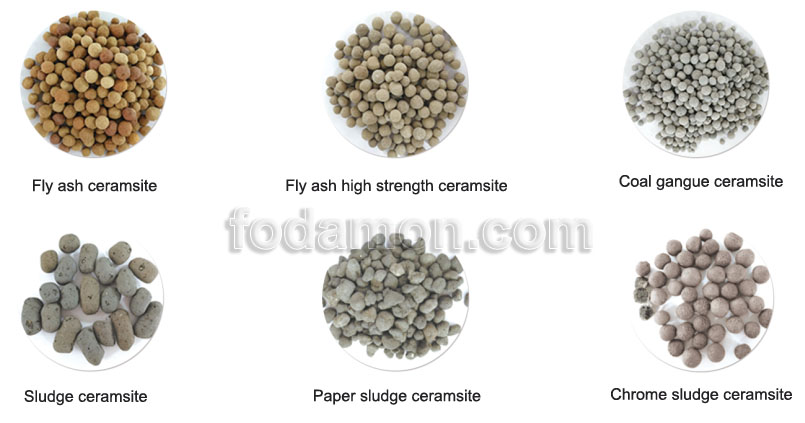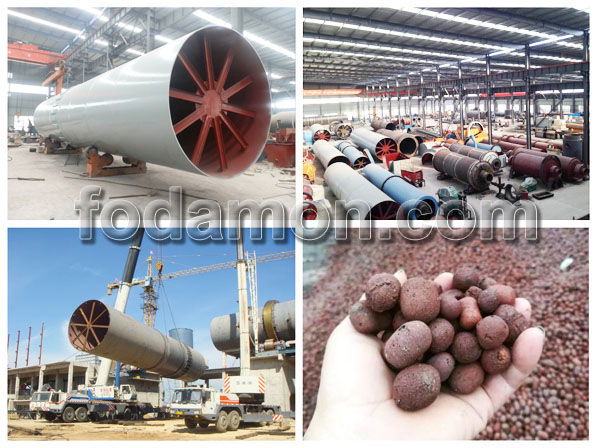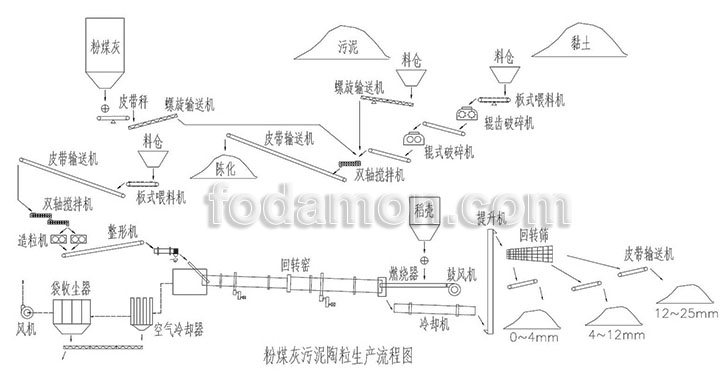Fly ash is a kind of pozzolanic mixture of pulverized coal which is extinguished at low temperature. It is the power plant that extinguishes the coal and grinds the coal into the pulverized coal below 100 microns. It sprays the preheating atmosphere into the furnace to form the suspension form and extinguishes. It produces the low temperature flue gas with thick turbidity and a small amount of incombustible substances. The fly ash is obtained through the installation of dust collection. The chemical composition of fly ash is similar to that of clayey soil, and its secondary identity is silica, Al2O3, Fe2O3, Cao and unburned carbon. Fly ash is the main solid waste discharged from coal-fired power plants.

Fly ash ceramsite is a kind of artificial light aggregate, which is made of fly ash as the main raw material (about 85%), and mixed with a certain amount of lime (or carbide slag), gypsum, admixture, etc. through measurement, batching, molding, hydration and hydrothermal synthesis reaction or natural hydraulic reaction. Ceramsite has excellent properties, such as low density, high compressive strength, high porosity, high softening coefficient, good frost resistance, excellent alkali resistant aggregate reactivity and so on. In particular, due to its small density, porous interior, uniform shape and composition, and certain strength and firmness, ceramsite is featured by light weight, corrosion resistance, frost resistance, earthquake resistance and good insulation (heat preservation, heat insulation, sound insulation, moisture insulation), etc. With its excellent properties, ceramsite can be widely used in building materials, horticulture, food and beverage, fire-resistant and thermal insulation materials, chemical industry, petroleum and other sectors.

The production process is roughly as follows: raw material (fly ash + quantitative admixture) – mixed – grinding – granulation – calcination – stacking – transportation (bagging) production of fly ash ceramsite should adopt double barrel rotary kiln, that is, the preheating section and drying section of the kiln body can control their rotation speed separately, so as to control their preheating time according to the state of raw material. Clay ceramsite has been banned from production and use in some areas in recent years due to the limitation of land resources. However, in some areas, river silt and waste mountain soil can be used for production. The technological process of ceramsite equipment is as follows: raw material mixing, granulation, screening, sintering, stacking and transportation (bagging). During the operation, attention should be paid to the observation to prevent the material from agglomerating in the kiln and affecting the quality. Fly ash ceramsite is usually fired by sintering and rotary kiln. The amount of fly ash is determined by the properties of fly ash and binder. Generally, the amount of fly ash in sintering process can reach 80% ~ 90%, and that in rotary kiln process can reach 70% ~ 80%. The quantity of fly ash ceramsite is higher than that of fly ash sintered brick. Fly ash ceramsite is mainly used to prepare lightweight aggregate concrete (also known as fly ash ceramsite concrete), which is characterized by light weight, high strength, low thermal conductivity, high fire resistance, good chemical stability, durability and heat insulation performance. Many bridge projects and multi-storey and high-rise buildings have been applied with fly ash ceramsite concrete, and remarkable technical and economic benefits have been achieved.

If you want to know more, please contact us. Fodamon’s engineers will work out the right solution for your situation.
